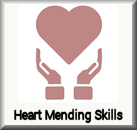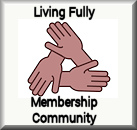Bids for connection are so important for couples
to understand and attend to in their relationship. I have written about this before and it is well described in John Gottman’s book, “the Relationship Cure”. I am drawn to write about this again for 2 reasons. One is not just because of the importance of the habit but the amount that I notice couples making disconnections in this regard. Second is the newer research by John Gottman’s student who sets out a hierarchy of bids that I think are also important to know. First, let’s review what bids for connection are. As people who want to connect, we are continuously making bids for connection that are actually “trust tests”, according to Gottman. We respond to these bids either by turning towards our partner, thereby making connection, or turning away from our partner by ignoring, or against our partners by anger or other negative responses, thereby losing the connection. This loss of connection has great meaning in the overall status of the health of our human need for secure attachment as well as the health of our everyday lives together. Apparently, Janice Driver, using the Gottman study research (remember the love labs that gave us the great information found in the book, Seven Principles for Making Marriage Work?) found that couples who had divorced 6 years after their marriage had turned towards each other 33% of the time versus those who were not divorced after 6 years turned towards each other 86% of the time. A big difference and such crucial information if you care about your relationship. So how does the hierarchy of bids work? At the bottom of the hierarchy are the little trust tests, a small bid for attention, for instance. They are not so costly for us and just need a nod, a touch or some kind of acknowledgement. Another couple of examples are a bid for help at 3 and sharing events of the day is an 8 on the scale. Halfway is problem solving at a 10. The last 4 up to 20 (the end of the scale) are the ones that couples can have difficulties with. They are intimate conversation, emotional support, understanding (compassion, empathy) and sexual intimacy. As couples are successful at lower levels where there is less risk, they are willing to move higher up the ladder to more vulnerability where the benefits get bigger. Another huge benefit was found by another student (Kim Ryan) who studied conflict and bids for connection. It was found that changing to more turning towards causes positive affect during conflict (the ability to have humor and affection – right in the middle of conflict!). This kind of positive affect in turn causes stability in relationship. I say learning the skill of meeting your partner’s bids for connection is worth doing! Go forth and Be Wonderful in your Relationship!
Relationship Experts Posts
Stop the Pain of Disconnection in Communication
Both marriage research greats, Sue Johnson and John Gottman, talk about challenges in communication. Sue Johnson looks at communication as an opportunity to create basic safety and security. She encourages couples in her book, Hold Me Tight, to look at the way you dance together to form reactive anger or the pain of dismissing or distancing. As in both Johnson and Gottman therapies, it is important to keep a positive regard for your partner during difficult communication and to frame the dance you are in as the problem. Look at your own relationship and see where you are in your communication. From the outside, in a therapy office it is easy to see the pattern but when you are in it yourself, it is definitely not so easy. Sue Johnson looks at three types of dialogues that you may recognize in your relationship.
1. Find the Bad Guy: This is when one or both of you accuse each other or blame each other for whatever is happening between you.
2. The Protest Polka: This is when John Gottman’s ideas of criticism, contempt, Control, avoidance, defense and stonewalling come into play. His research shows that these lead to the divorce court.
3. Freeze and Flee: This is where a couple mutually withdraws from the relationship and feelings of helplessness and hopelessness occur.
Couples can do all three, according to Sue Johnson, and I have certainly seen that in my practice. Usually, however, there is one dialogue that is played out more then any other between you. Have a conversation with your partner to see which it is that you do together and how you might make changes in this area.
One change that works well is understanding how to make a complaint. Also looking at the bigger picture and not focussing on this one dialogue as a maker or breaker of your relationship. Sue Johnson explains this as looking at the game not the ball or looking at the dance, not the last step only. This frame of mind keeps you out of hopelessness and helplessness and gives you the opportunity to use your constructive self to make some changes. It also allows you to keep a sense of positive sentiment override (John Gottman’s term) for your partner in the midst of the conflict. Of course, self soothing is important as well as being able to soothe your partner as well during the dialogue. These ideas add to the sense of security and stability of the relationship.
Learn more about how to learn these skills in the upcoming workshop on November 2nd and November 9th, 2013. See the website www.7principlesformakingmarriagework.com for more information and for registration.
The Stages of a Couple’s Journey
As I see about 20 couples a week, it is fascinating to note the similarities as they go through their different stages and what they are grappling with in those stages. I like Susan Campbell’s research on intimacy that came out in 1980 which she entitled, the Five-stage Couple’s Journey Map. She looks at relationships as a way for us to grow into more wholeness with ourselves and each other as each stage calls for different pieces of ourselves to take the centre stage in our relationships. When they do and we are able to meet the demands of that stage, we expand our knowledge of ourselves and each other and our self-concept expands as well.
As Dr. Campbell says in her book, The Couple’s Journey, “During the romance period, our “optimist”, our “visionary”, or our “seeker of harmony” may prevail. Later, when power issues emerge more clearly, we may give free reign to our “fighter” or our “negotiator” (p.115). I certainly see this in couples and notice that they can often get stuck when a characteristic is called for that they find difficult or was not modeled for them as a child. It is so helpful to see your marriage as a journey. I have seen couples quit on their relationship within weeks. I also see others who are so stuck on one issue that they are unable to get past that one issue and want to divorce, not understanding the dynamics of the power struggle stage and how the journey brings positive changes. Dr. Campbell’s five stages are:
1. Romance 2. Power Struggle 3. Stability (a need to look inward for the source of conflicts, not outward – a need for me to accept those parts of you that I have wanted to change – a need to forgive you for not being ideal). 4. Commitment (a learning to choose – assertiveness and yielding – an understanding begins to develop that I can be fully me and still support my partner’s development – a rising to a place of mutual cooperation). 5. Co-Creation (a vision of my relationship as part of a greater whole that has meaning in the greater context of life).
Each stage has its pitfalls, of course, that are resolved on an ongoing basis. Each resolution builds on the one before. This growth in the relationship and within the individuals happens with a set of growth principles that I talk about in other articles, such as courage, respect for differences and the ability to be interdependent among many others. Can you see yourself in these stages and where you get stuck?







